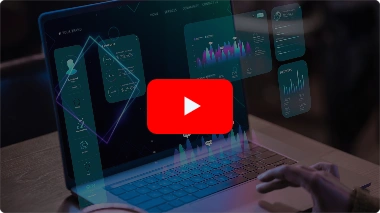
Aerospace Engineer
Explore career options on our platform! find your
perfect match for your future job.
Overview
Aerospace engineers play an important role in the aviation and space industries, designing, producing, and testing aeroplanes, spacecraft, and missiles. They operate in an array of industries, including defence, space research, and commercial aircraft, making aeronautical engineering a vibrant and important discipline. Aerospace engineering spans various specialized fields, including a thorough grasp of aerodynamics, propulsion systems, and material science. Aerodynamics is an understanding of how air reacts with solid matter, which is essential in creating efficient and safe aeroplanes and spacecraft. Propulsion systems are the engines and motors that generate the necessary thrust for these vehicles, and materials science is concerned with selecting and applying materials that can resist harsh circumstances. Aerospace engineering encompasses far more than only the design and creation of new aircraft and spacecraft. Aerospace engineers also work to maintain and enhance current technology, assuring their safety and efficiency. They may work on initiatives such as creating new aviation technology, increasing fuel efficiency, or enhancing aircraft durability. An aeronautical engineering career is both exciting and financially lucrative. Aerospace engineering salaries are competitive, reflecting the field's high degree of competence and responsibility. According to numerous industry statistics, aerospace engineers may expect to make a good living, with prospects for advancement as they gain expertise and work on increasingly difficult projects. So, is aerospace engineering a good career? The answer is a bold yes. Aerospace engineering provides plenty of opportunities for people interested in innovation, problem-solving, and working with cutting-edge technologies. The demand for experienced aerospace engineers remains high, and their work is crucial to advances in aviation and space exploration. In a nutshell, aerospace engineers are critical to the advancement of aviation and space technology. Their knowledge of aerodynamics, propulsion systems, and materials science is critical for developing and enhancing aeroplanes and spacecraft. With a potential aerospace engineering salary and a diverse range of tasks, choosing a career in aerospace engineering is both gratifying and influential.
Famous Personalities
.png
)
Kalpana Chawla (Astronaut NASA)
.png)
Rakesh Sharma (Astronaut, ISRO)
.png
)
G. Madhavan Nair (Former Chairman, ISRO)
.png
)
K. Radhakrishnan (Former Chairman, ISRO)
Skills
Technical Skills
Analytical Skills
Soft Skills
Roles and Responsibilities
Design
Develop designs for aircraft, spacecraft, and missile systems based on requirements and specifications.
Analysis
Conduct aerodynamic and structural analyses to predict system performance.
Testing
Carry out ground and flight tests to validate design performance and safety.
Research
Investigate new technologies and materials to enhance system performance and efficiency.
Project Management
Oversee aerospace projects, ensuring they are completed on time and within budget.
Compliance
Ensure all designs and processes comply with industry regulations and safety standards.
Documentation
Document the design and development process, including specifications, manufacturing instructions, and safety protocols.
Expected Earnings
Entry Level
₹4,00,000 - ₹8,00,000 /year
Mid Level
₹8,00,000 - ₹16,00,000 /year
Senior Level
₹16,00,000 - ₹24,00,000 /year
Top Executive
₹24,00,000 +/year
Work Context
Environment: Office setting, laboratories, and on-site testing facilities.
Hours: Standard office hours, with occasional overtime or weekends depending on project deadlines.
Interaction: Regular interaction with team members, project managers, and clients.
Travel: Occasional travel for on-site testing, client meetings, and conferences.
Remote Work: Limited remote work opportunities, mostly project-based.
Job Opportunities: High demand in sectors like defense, space exploration, and commercial aviation.
Learning Curve: Continuous learning to keep up with evolving technologies and industry trends.
Strengths
High demand for skills
Involvement in cutting-edge technology
High earning potential
Opportunities for innovation
Significant career growth
Possible Constraints
High pressure
Need for continuous learning
Potential for long hours
Risk of job burnout
Intense competition
Ideal Progression Path
Junior Aerospace Engineer
Aerospace Engineer
Senior Aerospace Engineer
Aerospace Engineering Manager
Director of Engineering
Chief Technology Officer (CTO)
Education Path
Path 1
1.
12th
Science (Maths)
2.
ITI/Diploma
Diploma in Aeronautical Engineering (Specialization: Aerodynamics, Avionics, Propulsion)
3.
UG
B.Tech in Aerospace Engineering (Specialization: Aerodynamics, Avionics, Propulsion)
4.
PG
M.Tech in Aerospace Engineering (Specialization: Aerodynamics, Avionics, Propulsion)
Path 2
1.
12th
Science (Maths)
2.
UG
B.E. in Aerospace Engineering (Specialization: Space Engineering, Aircraft Design, Flight Mechanics)
3.
PG
M.E. in Aerospace Engineering (Specialization: Space Engineering, Aircraft Design, Flight Mechanics)
4.
Certification
Certified Flight Instructor (CFI), Project Management Professional (PMP), Six Sigma Black Belt
Path 3
1.
12th
Science (Maths)
2.
UG
B.Sc in Aerospace Engineering (Specialization: Rocket Propulsion, Satellite Technology, Aircraft Maintenance)
3.
PG
M.Sc in Aerospace Engineering (Specialization: Rocket Propulsion, Satellite Technology, Aircraft Maintenance)
4.
Certification
Certified Space Technician (CST), Certified Systems Engineering Professional (CSEP), ISO 9001 Quality Management Certification
Path 4
1.
ITI/Diploma
ITI in Aeronautical Engineering
2.
12th
Science (Maths)
3.
UG
B.Tech in Aerospace Engineering (Specialization: Aerodynamics, Avionics, Propulsion)
4.
PG
M.Tech in Aerospace Engineering (Specialization: Aerodynamics, Avionics, Propulsion)
Top Exams
Top Colleges
Indian Institute of Technology (IIT) Bombay,
Indian Institute of Technology (IIT), Madras
Indian Institute of Technology (IIT), Kanpur
Indian Institute of Science (IISc), Bangalore
National Institute of Technology (NIT), Trichy
Top Companies
.png)
.png)
.png)


Related Videos


Sign Up for the Latest Updates & News
Sign Up for the Latest Updates & News

100+
Professionals are ready to help you!
Confused About Career?
Talk to our Expert
Our team of career counselors consists of seasoned professionals with years of experience and specialized qualifications, dedicated to helping you achieve your career goals with personalized and expert advice.
Personalized Guidance
Comprehensive Career Planning
Expert Advice
Flexible Scheduling
Proven Success
Holistic Approach